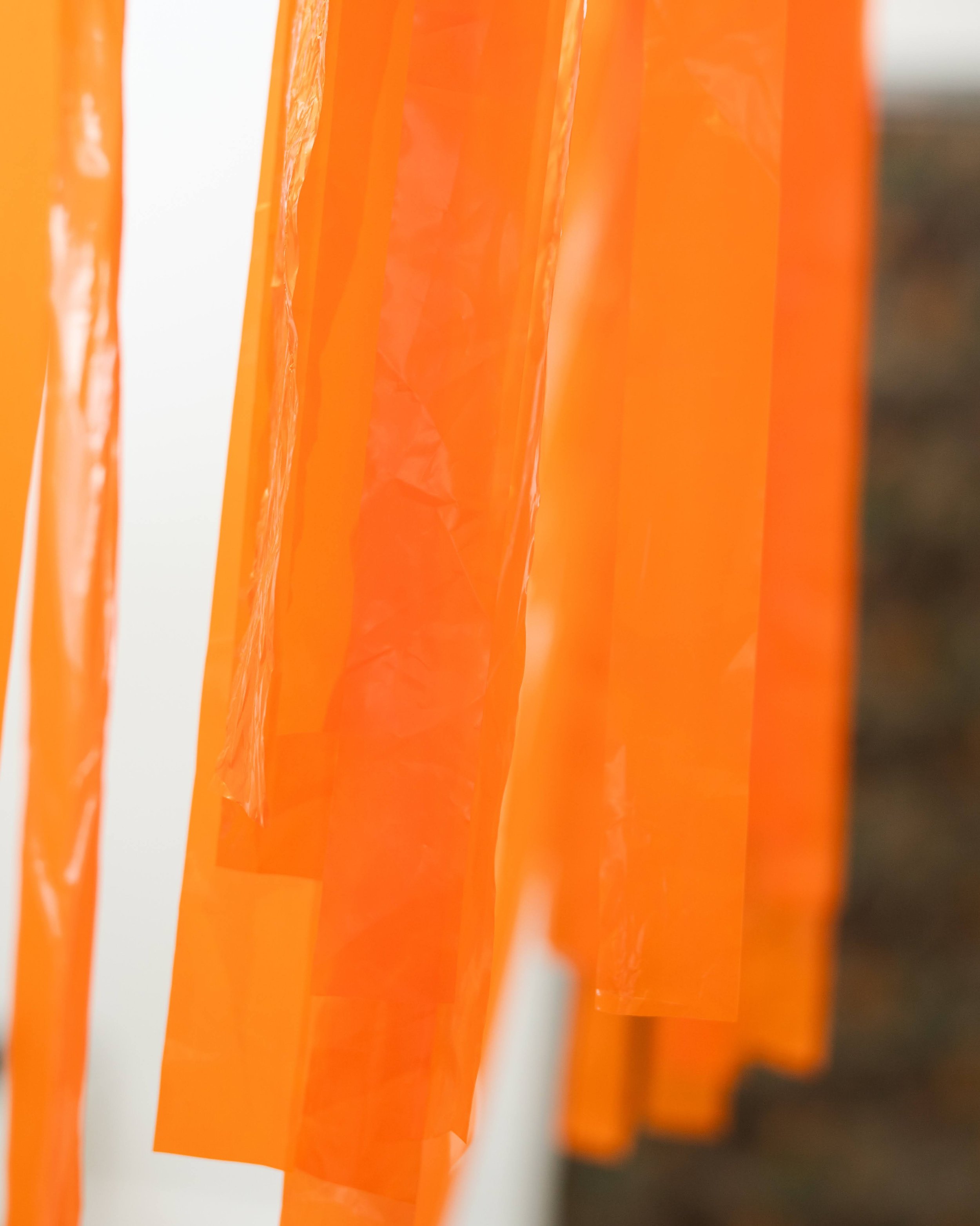





Proprioception is a bodily function concerned with position and motion—a sense that allows you to relate to your surroundings outside of relying on vision.
This series of editions come in the form of a belt made out of RealTree Camouflage, a representation of the land, and adorned by strands of flagging tape, something used to mark the land for resource extraction.
The form of belts was important, as the body, garments and land are all intertwined. Being queer and Indigenous, Wright reflected on the ways their body was marked by others growing up—marked as different, aberrant, deserving of being cut out of belonging. Colonialism marks bodies and the land in equally violent but different ways, and cuts them out in equally violent but different ways.
Arbitrary borders are then beaded onto the surface of the belts, responding to formal elements of the camouflage. Some seem permeable, or have repeated breaks in the beadwork, others seem staunch and cohesive, representing how borders themselves are social constructs and have not always been configured in the colonial way.
These belts are either hung from the ceiling as a sort of threshold, or laid flat on the ground—both installations reflect further on the notion of borders, social customs, social in and out groups, and access.
These belts are a manifestation of Wright trying to gain insight into how they orient themselves in relation to others, both of their own accord and not. They are a way to sense, to feel, through making rather than through vision.